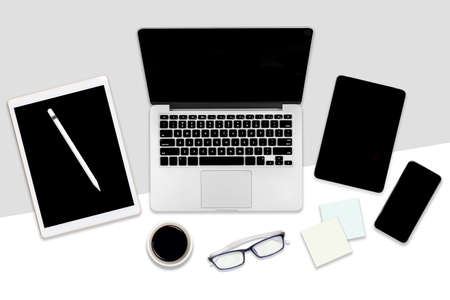Introduction: Why Desk Direction Matters in Business
When it comes to designing your workspace, most people think about the size of the desk, a comfortable chair, or maybe adding a plant or two. But have you ever considered which direction your desk faces? In modern American workplaces, choosing the right desk direction—north, south, east, or west—can actually influence how focused, productive, and energetic you feel throughout your workday.
Desk direction might sound like something out of ancient tradition, but it’s gaining popularity even in high-tech offices and home workspaces across the United States. The way your desk is oriented can impact natural light exposure, minimize distractions, and even affect your mood and motivation. For remote workers and office teams alike, finding the best desk direction could give you that extra boost you need for business success.
How Desk Direction Influences Your Work
The direction your desk faces can play a big role in several key areas:
| Desk Direction | Potential Benefits | Possible Drawbacks |
|---|---|---|
| North | Steady focus; less glare from sunlight | Might feel less energized due to reduced natural light |
| South | Bright light boosts energy; ideal for creativity | Can cause screen glare or overheating in summer |
| East | Morning sun jumpstarts productivity; good for early risers | May be too bright early on; afternoon shadows |
| West | Afternoon light maintains alertness post-lunch | Possible heat buildup late in the day |
The American Workplace Perspective
In today’s fast-paced business environment, Americans are always looking for ways to work smarter—not just harder. Adjusting your desk direction is an easy, cost-effective change that could improve daily workflow. Whether you’re in a corporate office or working from your kitchen table, understanding how north, south, east, and west orientations interact with light and energy can help you create an environment where you thrive.
2. Decoding North, South, East, and West: What Each Direction Means
When it comes to choosing the best desk direction for business success, understanding what each direction represents can make a big difference. Both Western culture and traditional feng shui offer unique interpretations of North, South, East, and West. Let’s break down what each direction means in these two systems and how you can use this knowledge in your American office or home workspace.
Understanding Desk Directions: Western vs. Feng Shui Perspectives
| Direction | Western Perspective | Feng Shui Meaning |
|---|---|---|
| North | Associated with stability, professionalism, and career growth. In many American offices, facing north is seen as grounding and practical—great for focused work. | Represents water element, linked to career and life path. Sitting facing north can help with personal development and professional advancement. |
| South | Symbolizes energy, ambition, and recognition. Facing south is often connected to leadership roles or creative thinking in a fast-paced environment. | Connected to fire element, representing fame and reputation. In feng shui, facing south may bring visibility and more opportunities for acknowledgment. |
| East | Tied to new beginnings, motivation, and growth—ideal for startups or launching new projects. The sunrise from the east inspires a fresh start every day. | Linked to wood element, associated with health and family. Facing east supports creativity and well-being in your business ventures. |
| West | Relates to completion, reflection, and winding down tasks. This direction can be calming and is suitable for jobs that require evaluation or closure. | Represents metal element, supporting children’s luck and future planning. In business, facing west can encourage clear thinking and productive outcomes. |
How These Meanings Apply in the American Business Environment
Each direction offers something unique based on your goals at work. For example:
- If you’re aiming for career growth or stability: Try placing your desk facing North for a sense of purpose and professionalism.
- If you want more recognition or creative energy: South-facing desks may give you that extra boost of confidence and attention.
- If starting something new or looking to innovate: Consider an East-facing desk to invite inspiration and positive momentum into your workday.
- If your focus is on organization or wrapping up projects: A West-facing desk can help you stay clear-headed as you finish important tasks.
Quick Tips for Desk Placement Success
- Combine both perspectives—choose a direction that matches your personal goals while also considering the energy you want to bring into your workspace.
- No single direction fits everyone; experiment with small changes before making big moves in your office layout.
- The best desk direction is the one that feels right for you while supporting your business objectives in an American context.

3. Desk Direction and Professional Goals
When it comes to choosing the best direction for your desk, thinking about your professional goals is key. The orientation you select can help boost the qualities you need most in your career, whether thats leadership, creativity, collaboration, or focus. Here’s a simple guide to help you match your desk direction with what you want to achieve at work.
Choosing Your Desk Direction by Career Ambition
| Career Goal | Recommended Desk Direction | Why It Works |
|---|---|---|
| Leadership | North | Facing north is thought to build confidence, authority, and a sense of purpose—qualities that support leadership roles. |
| Creativity | East | Sitting facing east connects you with the sunrise and new ideas, making it great for artists, designers, and anyone who needs inspiration. |
| Collaboration | West | The west side is said to encourage communication and teamwork, so it’s perfect if your job involves lots of group projects or client interactions. |
| Focus & Productivity | South | Facing south can help sharpen concentration and drive, which is ideal for tasks that require deep focus or detailed work. |
How to Decide Which Direction Fits You Best
- Think about your daily tasks: Are you leading a team, brainstorming new concepts, working on solo projects, or collaborating?
- Try different setups: If possible, experiment with each direction for a few days. Notice how each position makes you feel and perform.
- Adapt as your goals change: Your career goals might shift over time. Don’t be afraid to reorient your workspace as needed.
Your Desk Setup Tips for Success
- Keep your workspace tidy no matter which way you face—clutter can get in the way of any goal!
- Add personal touches that inspire you, like photos or motivational quotes.
- Make sure you have good lighting and a comfortable chair for long work hours.
4. Practical Tips for Setting Up Your Desk
Understanding Typical American Office Layouts
Before you move your desk, take a look at the most common setups in American homes and workplaces. Many American offices use open floor plans or cubicles, while home offices are often set up in spare bedrooms, basements, or even living rooms. No matter your space, choosing the right direction for your desk can make a big difference in your productivity and comfort.
How to Choose Your Desk Direction
Here’s a handy table showing the pros and cons of facing different directions, so you can pick what works best for you:
| Desk Facing | Pros | Cons |
|---|---|---|
| North | Calming energy, good for focus Less screen glare from windows (if window is east/west) |
Might feel less energized Can feel colder in some climates |
| South | Energizing and motivating Natural light if window is south-facing |
Potential for screen glare Might get too warm by afternoon |
| East | Great morning light boosts alertness Good for early risers and morning meetings |
Afternoon shadows can be distracting Might need blinds to control light |
| West | Softer afternoon light Less direct sunlight during work hours if you start early |
Evening sun can cause heat/glare Might feel sluggish later in the day |
Real-Life Advice for Rearranging Your Workspace
- Start with the Door: If possible, position your desk so you can see the door without being directly in line with it. This helps you feel secure and aware of who comes in—an idea that fits both feng shui principles and practical comfort.
- Naturally Lit Spaces: Try to use natural light to your advantage. In many American homes, south-facing windows get the most consistent daylight. If glare is an issue, add adjustable blinds or sheer curtains.
- Cubicle Adjustments: In a shared office or cubicle, you may not have much choice about direction. Focus on keeping your workspace tidy, adding a small plant, and making sure your back isn’t exposed to heavy foot traffic.
- Tidy Up: A clutter-free desk boosts focus no matter which way it faces. Use organizers or drawers to keep things out of sight but within reach.
- Add Personal Touches: Decorate with items that inspire you—a family photo, a favorite mug, or motivational quotes can all help create positive energy at your desk.
- Cable Management: Tidy cables mean less visual stress. Use clips or sleeves to keep everything neat.
- If Space Is Tight: Sometimes there’s only one spot where your desk fits. That’s okay! Use mirrors to reflect more light or face a wall but add inspiring artwork at eye level.
Troubleshooting Common Desk Setups in U.S. Homes & Offices
| Problem | Quick Fixes |
|---|---|
| No space near windows | Add bright desk lamps; use cool white bulbs for alertness. |
| Your back faces the door (can’t move desk) | Add a small mirror so you see behind you; place a tall plant beside your chair for security. |
| Noisy area (open office plan) | Add noise-cancelling headphones; use desktop dividers or plants as soft barriers. |
| Lack of storage causing clutter | Add floating shelves above desk; under-desk rolling carts help maximize space. |
| Lack of privacy in shared spaces | Add a folding screen behind your chair; personalize your desktop to create boundaries. |
Your Desk Direction Matters—But Comfort Comes First!
The direction you face can impact your mood and success—but always balance it with what feels right and works with your room layout. Try different setups for a week each if you can, then stick with what makes you feel productive and comfortable every day.
5. Blending Cultural Wisdom with Modern Office Trends
Today’s workplaces look very different from the traditional offices where Feng Shui was first practiced. Open office plans, remote work, and shared coworking spaces are now the norm across the United States. So, how can you apply time-honored desk direction advice—like facing North, South, East, or West—when your workspace is always changing? Here are some practical tips to blend cultural wisdom with modern business trends for better productivity and workplace harmony.
Desk Direction Tips for Open Offices
In an open-plan office, you might not have full control over which way your desk faces. However, you can still use small adjustments to channel positive energy:
- Add a plant to your desk’s “wealth corner” (the far left corner) to encourage growth and fresh ideas.
- Use a privacy screen if your back faces a busy walkway to reduce distractions and maintain focus.
- Choose a chair with good support—this substitutes the protective “mountain” behind you in traditional Feng Shui.
Remote Work Desk Positioning
If you’re working from home, you have more freedom to experiment with desk directions. Consider these suggestions:
| Direction | Benefits | Best For |
|---|---|---|
| North | Promotes clarity and logical thinking | Finance, research, data analysis |
| South | Boosts confidence and leadership skills | Sales, management, entrepreneurship |
| East | Sparks creativity and new beginnings | Design, marketing, innovation roles |
| West | Enhances communication and social connections | Customer service, HR, networking jobs |
Small Changes for Big Impact in Modern Offices
- If you cant move your desk to face your preferred direction, try placing a small mirror on your desk to reflect the desired direction.
- Add personal items that represent success or motivation near your workspace for positive vibes.
- Keep your workspace tidy—clutter blocks both productivity and positive energy flow.
- If possible, sit where you can see the door; this is said to help you feel more in control and aware of opportunities.
Adapting Traditions for Today’s Professionals
You don’t need to follow every Feng Shui rule perfectly to enjoy its benefits. Mix old wisdom with new habits: set up virtual backgrounds aligned with lucky directions during video calls or take short breaks facing your chosen direction. By harmonizing tradition with flexibility, you’ll find a setup that fits your career path—and feels just right for you.


